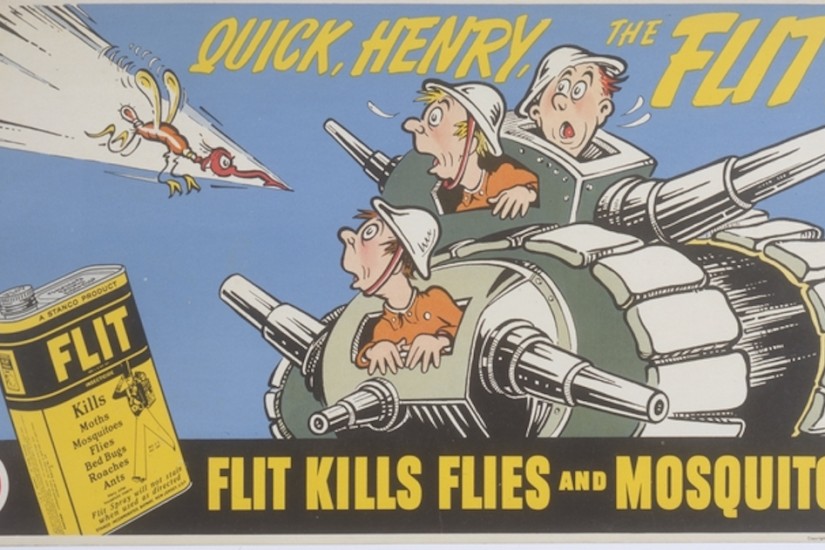What’s delightful about the ’30s and ’40s advertising work of Geisel—who sometimes signed his work “Dr. Seuss”—is how clearly his giddy humor and unhinged imagination shine through. Even then, his mind produced surreal long-faced and sad-eyed creatures, like birds and bugs with long, sinewy necks and shaggy eight-legged mammals. Geisel gave them punny, rhythmic names that roll off the tongue, and often placed them in elaborate curvilinear architectural structures followed a logic of their own.
“He developed his style, his sensibility about those creatures, even when he was in an undergraduate student at Dartmouth,” says Lynda Claassen, director of the Mandeville library, which holds more than 8,500 items from Geisel’s personal archive including his advertising work, illustrations, stories, and political cartoons for magazines like “Judge,” “Redbook,” and “The Saturday Evening Post” as well as sketches, proofs, notebooks, audio- and videotapes, photographs, and other memorabilia.
“You can look in his notebook from Oxford, where he did his graduate studies, and see that when he doodles, they’re the same kind of creatures, very whimsical, many of them anthropomorphic,” Claassen says. “They’re very much the same throughout his career—and throughout his life, actually.”
Plus, his gift for fanciful wordplay, so famously put to use in books like “Horton Hears a Who!” and “Green Eggs and Ham,” manifested in his attention-grabbing ad copy. One of his longest-running campaigns for bug spray hung on the catchphrase, “Quick, Henry! The Flit!” Standard Oil, to their credit, seemed happy to let Geisel run amuck with his ad imagery and copy, publishing every brilliantly absurd idea that popped out of his brain.
“Flit, of course, was intended for adults,” Claassen says. “I can remember my grandmother talking about it. It was a bug spray; you weren’t trying to sell it to little kids. But the ads were very effective, because they’re eye-catching, they’re amusing, and the message is right there.”
